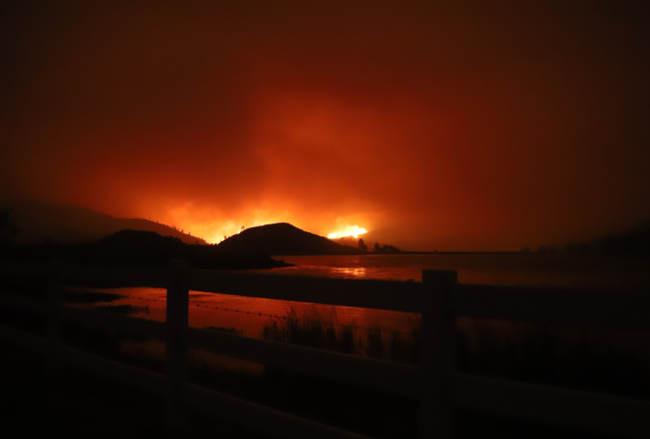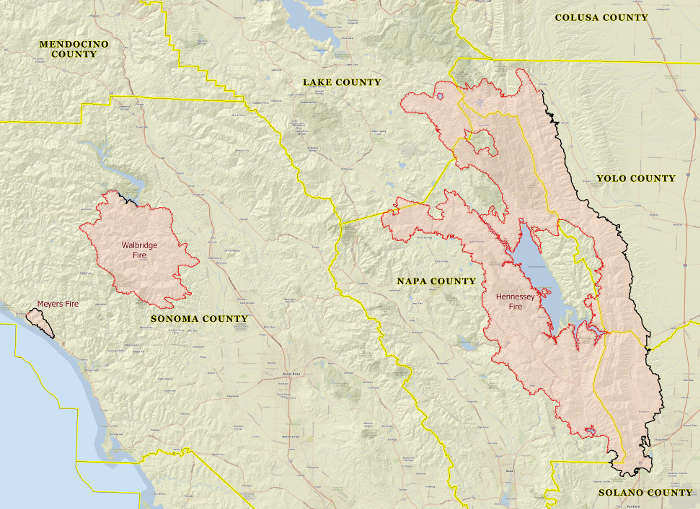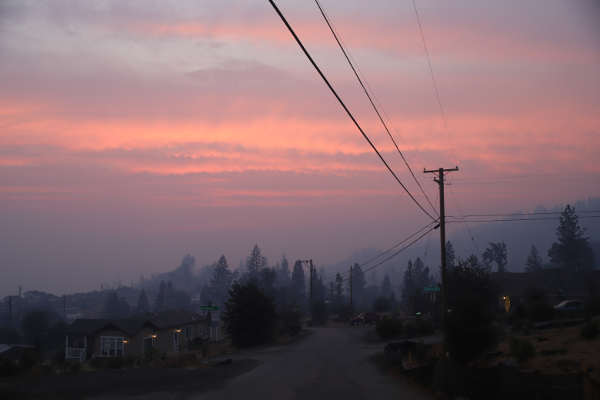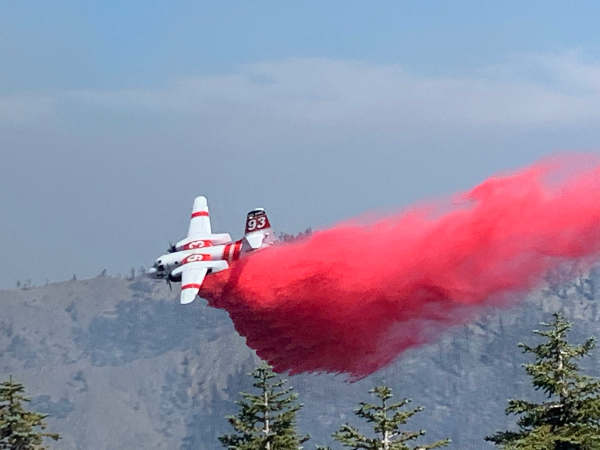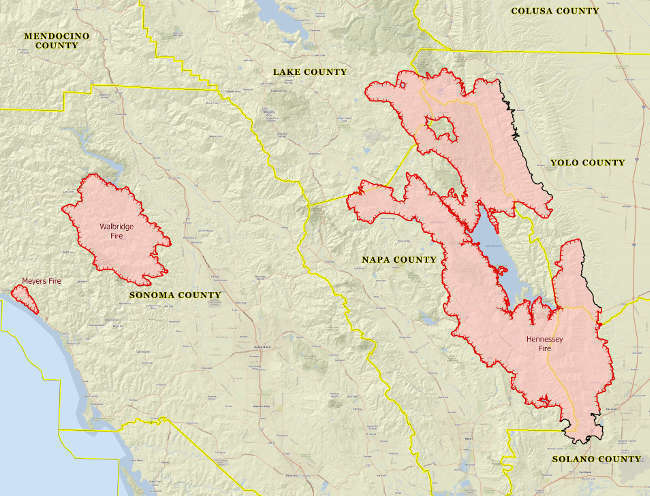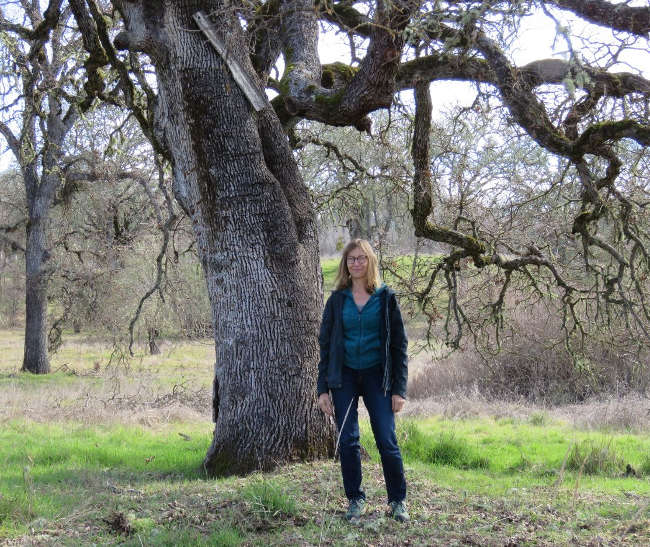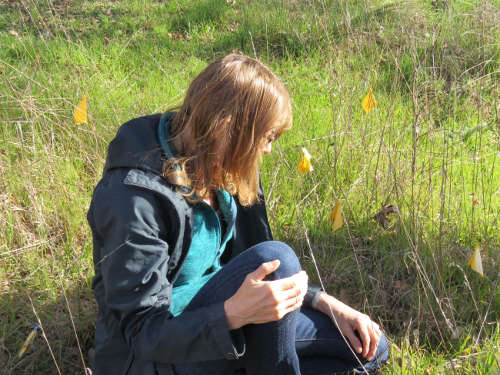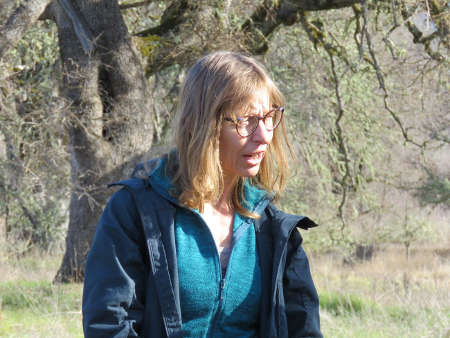- Elizabeth Larson
- Posted On
Officials discuss LNU Lightning Complex challenges; incident second-largest in state history
LAKE COUNTY, Calif. – Fire officials on Monday discussed the challenges they’re facing in their efforts to contain the LNU Lightning Complex, which is burning across five counties and now one of the largest wildland fire incidents in California’s history.
Cal Fire joined with county officials in a virtual community meeting on Monday night.
The fire – burning since Aug. 17 – had grown to 351,817 acres and 25-percent containment by evening, Cal Fire reported.
Firefighters kept the fire’s growth to just under 1,800 acres on Monday.
It’s now the second-largest wildland fire complex in recorded state history, said Chief Sean Kavanaugh, the complex’s incident commander and the head of Cal Fire’s Incident Management Team 2.
The largest remains the 459,123-acre Mendocino Complex that raged through Lake, Mendocino, Colusa and Glenn counties two years ago.
The LNU Lightning Complex includes the Hennessey fire – burning in Lake, Napa, Solano and Yolo counties – which was up to 294,602 acres and 29-percent containment on Monday evening.
On the Sonoma County side of the complex, the Walbridge fire west of Healdsburg reached 54,503 acres and 7-percent containment and the Meyers fire north of Jenner remained at 2,360 acres and edged up to 96-percent containment.
Evacuation orders and warnings issued late last week remained in effect on Monday, with Kavanaugh reporting that the various portions of the fire were about five to six miles from the communities of Hidden Valley Lake, Lower Lake and Middletown.
New damage assessments led to updated numbers regarding the complex’s impact on property. As of Monday evening, 908 structures have been destroyed and 248 damaged, with 30,500 still threatened. So far, Cal Fire has not reported on where the damaged and destroyed structures are located.
More than 300 firefighters and about 50 additional engines joined the incident on Monday. Cal Fire said the assigned resources include 2,194 personnel, 304 engines, 50 water tenders, 12 helicopters, 18 hand crews and 41 dozers.
Cal Fire said firefighting resources continue to be stretched statewide as more than 14,000 firefighters continue to battle more than two dozen major fires and lightning complexes across California.
Kavanaugh said that on previous fires they have relied heavily on hand crews, which this year are in short supply. He said they have requested assistance from the National Guard and have received information that they may get that help by the end of the week.
‘Lightning siege’ sparks fires across the state
Since the lightning siege that started on Saturday, Aug. 15, Cal Fire said there have been more than 13,000 lightning strikes.
As a result, there have been more than 625 new wildfires, which have now burned over 1.2 million acres. In this siege, there have been seven reported fatalities and more than 1,200 structures destroyed, Cal Fire said.
Cal Fire officials said that California has experienced a significant increase in the number of wildfires and acres burned in 2020 when compared to 2019.
The agency said 2,700 more wildfires have occurred this year than last, with an additional 1.4 million acres burned year to date when compared to 2019.
During the Monday evening virtual community meeting, Cal Fire Sonoma Lake Napa Unit Chief Shana Jones said that, for comparison, by this time last year 55,000 acres had burned.
She said statewide firefighting resources have been drawn down by 96 percent, with only 4 percent remaining available for initial attack fires. In addition, Cal Fire has responded to 13,800 separate emergency incidents.
Additionally, Jones reported that all six of Cal Fire’s incident management teams are now assigned to incidents throughout California.
The view from the fire lines
Kavanaugh and his team also were assigned to the Mendocino Complex as well as the Rocky and Jerusalem fires in 2015. The LNU Lightning Complex is burning into the Rocky and Jerusalem fire scars, he said.
During the virtual community meeting on Monday evening, Kavanaugh said this is the third time in six years that his team has been deployed to Lake County for a major wildland fire incident.
Chris Waters, operational section chief on the complex, said the northwest side of the Hennessey fire – from Calistoga to the scars of the Jerusalem and Rocky fires – continues to be active. “It’s actually our top priority,” he said.
Waters said they’ve been moving dozer line, engines and other equipment north on the incident.
He said every day at around 2:30 p.m., they’ve seen an increase in fire behavior and the same was true on Monday.
While the fire is not moving extremely fast, “it continues to move at a steady pace,” Waters said.
Firefighters on Monday were building control lines and planning firing operations that would send up smoke, he said.
Despite the fact that the complex is burning in areas that already have burned, Waters said firefighters are still having difficulty getting the fire under control.
Smoky conditions have hampered using aircraft on the fire, but on Monday south county residents reported seeing aircraft – including very large air tankers – flying the fire.
Kavanaugh reported that a DC-10 very large air tanker worked on the fire on Monday.
Deputy Operations Officer Nick Brown said during the meeting, “We are doing everything we can to halt the spread of this fire.”
To that end, they’re continuing to fight it with air tankers. Brown said they’re using large air tankers and very large air tankers, or VLATs.
Three VLATs are available for the complex, Brown said. In addition to two DC10s, which each carry 10,000 gallons of retardant, they have a 747 which has the capacity for 19,000 gallons.
Brown said they’re using that air power to build contingency line at the Lake and Napa County line.
Authorities said the overnight conditions late Sunday and into early Monday were more favorable for the firefighting effort. There was light rain across the county and lightning was not reported locally.
However, Cal Fire said there were nearly 300 lightning strikes across California overnight, and so firefighters have continued to monitor for additional lightning strike wildfires and the potential for additional lightning.
Local help for animals
The county’s Lake Evacuation & Animal Protection, or LEAP, disaster response group was activated last week.
Since then, LEAP has taken more than 110 calls for assistance for more than 800 animals, according to Lake County Animal Care and Control Director Jonathan Armas.
Armas said 38 evacuated animals are in their care and another seven have been returned to their owners.
He said they are starting to see an increase in calls from people asking to have animals checked on in the evacuation areas.
The team can go into evacuated areas, check on animals, evacuate them if necessary or care for them in place, Armas said.
Those who need help with evacuating or caring for animals can call Lake County Animal Care and Control at 707-263-0278. Armas said phone calls are being answered daily.
Email Elizabeth Larson at This email address is being protected from spambots. You need JavaScript enabled to view it.. Follow her on Twitter, @ERLarson, or Lake County News, @LakeCoNews.

